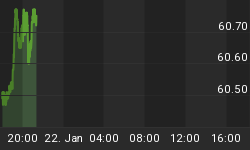"Establishment Survey: Nonfarm payrolls fell 467,000 in May after an upwardly revised 322,000 decline in May. The April and May revisions of payroll employment led to a net increase of 8,000 jobs. The headline number includes a loss 49,000 government jobs related to the 2010 Census.
"The path of economic recovery is not a straight line; ups and downs in hiring are part and parcel of the expected trajectory of employment. Stepping back in time, payroll employment showed a firm trend only in 1993 (+2.1 million jobs) although the 1990-1991 recession ended in March 1991. Payroll jobs declined in 1991 (-1.106 million) and rose only 338,000 in 1992, reflecting tepid quarterly gains. After the 2001 recession, hiring gathered momentum only in the fourth quarter of 2003.
"Therefore, it is important to note that payroll growth occurs well after a recession has ended. At the present time, the recession has not ended yet and it follows that it is premature to see significant gains in employment in the near term. In fact, it is noteworthy that on a quarterly average basis, payroll employment fell 1.551 million in the second quarter compared with a loss of 2.065 million jobs in the first quarter of 2009."
"A record 30 of the country's 50 states are expected to have to borrow up to $17 billion by next year, said Rick McHugh of the National Employment Law Project, a nonpartisan advocacy group.
"'We are setting the stage for big pressures for states to restrict eligibility and benefit levels,' McHugh said. 'Those type of restrictive actions undercut the (Depression-era program's) economic and social stability purposes.'
"The state-run unemployment insurance programs are normally financed with payroll taxes paid by employers on each worker. But the funds' tax revenues are falling at the same time as benefit demands are rising.
"Nine million Americans are receiving jobless benefits, triple the number who got checks at the beginning of the year. Experts predict the number of recipients will peak sometime this summer as long-term unemployed run out of benefits, which were recently extended and last for 59 weeks in most cases."
"The outlook about the job market turned pessimistic with a larger percentage of respondents indicating that it is hard to find jobs in June versus May (44.8 versus 43.9 in May) and a fewer percentage of respondents noting that jobs are plentiful (4.5 versus 5.8 in May)."
"Personal spending rose 0.3% in May, as households saved most of a 1.4% boost to income from government social payments and tax cuts (the saving rate rose to almost 7%). The ability of the equity market to advance hinges importantly on consumer spending. A modest upturn in spending would provide investors with greater confidence that the economy will not lapse back into recession in 2010.
"It is always difficult to see how consumers will boost spending when payrolls are shrinking, especially given the tremendous loss of wealth. However, in a typical recovery consumers become more upbeat on the outlook and spending edges higher. This generates increased income and sets off an inventory restocking phase, which then feeds back into stronger consumer confidence and spending. With a lag, payrolls begin to expand again.
"The chart compares the current recession with the average of past cycles, each aligned with the end of the recession. One difference this time is that real disposable growth income has accelerated before the upturn in consumer spending. The contraction in wages and salaries has been more than offset by lower taxes and government transfer payments. This year's tax cut has a greater chance of being spent than the one-off rebate checks mailed out last year. The jump in income provides some leeway to increase spending without resorting to credit cards.
"Bottom line: there are good odds that the equity market will benefit in the coming months from better news from the consumer sector."




















